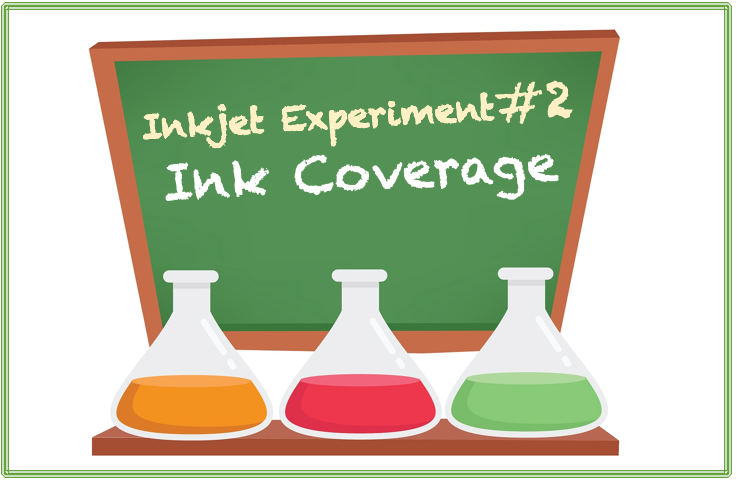Experimenting with your inkjet press is something that should be part of your monthly plan. Like maintenance, cleaning, and production, experimenting is how you get to know the press. It is how you come to understand the difference between what the vendor told you and what your shop is capable of producing. The object of the first experiment was paper. The suggestion was to look at the paper you have, the paper you might want, and the paper your customers ask for to see what happens. Go back and check that one out if you missed it.
This episode is about experimenting with Ink Volume.
Many print professionals, especially print operators who have come from offset, believe that more is better. Dial up the ink and the print will be rich, vibrant and a delight to the customer. In inkjet printing, especially high-speed inkjet printing, more ink is not always the path to the best image quality, and this is where experimenting comes in. No matter what your vendor delivered to you as the “best” profile or even the only profile, make sure you know how to edit the ink percentages. This can be tackled either in an additional profile or by making runtime color curve adjustments on the Digital Front End (DFE), BEFORE the trainers leave your building.
Once you are sure you understand the mechanics of making changes to how much Cyan, Magenta, Yellow and Black (and other colors if you have them available) will be used, it is time to set up some basic experiments. The result will make you more aware of where the optimum settings are for the types of jobs you do on the types of paper you use, and it just might save you some money.
Start by identifying six jobs that are typical of the work you do. Find at least one that uses color simply and one that is a color management challenge. And then fill in along your gamut. Find prints of the jobs that have been accepted by customers in the past if possible. Identify the paper currently used for each job and any other profiles and settings that are currently in use. The goal is to establish a baseline for each job. In some cases, you may be able to get the data for how much ink the job uses; if you can, grab that as well. It will help you to establish whether changing from what you do today to options you uncover after experimenting will add cost or save money.
Now the fun begins!
- Run each job as you run them today. You may need to do this over time depending on how busy you are and how many paper types are involved. Set aside that print run. You don’t need to run a whole pallet or roll, just enough to get a good amount to compare.
- If you have the capability to edit your digital front end curves, , experienment with black first by reducing 100% black to 85%. This may be close to where you are running today or a long way down the dial. Run the job. Did black turn gray? Do other colors wash out? Change black to 90% then 95%. If you start to see crisper print, but it’s not quite right, play with the numbers until you dial it in. Is that black percentage higher or lower than where you were?
- Now do the same with each of the other inks. Start with broad numbers and then dial in.
Where did you end up? In cases where I have done this on presses from several different vendors, I found that less black brought out more vibrant color. I could eliminate muddiness from too much ink on the substrate, and that improved not only the cost of the print, but the ability to adjust dryers (save power costs) and create a spectacular product.
Yes, this is time-consuming. Yes, it takes some dedication. But consider a weekend or an overnight. Get the team involved. Perhaps some pizza! The more who are involved, the more the word will spread about just how fine the printing can be!
Next time we will tackle experiment number three. It’s a surprise.
Remember, there are a million questions in inkjet city! Have questions? Ping me on LinkedIn or drop a note to pcm@mcgrewgroup.com.
Editor’s Note: This experiment is helpful for jobs which may benefit from ink reduction and where a close color match is not required. Did your experiment uncover jobs that can benefit from less ink? Apply these ink reductions in your workflow to create custom profiles for your printer. This will ensure repeatability for all your ink level requirements and profiles can also be tied to cost estimating assumptions.
Inkjet Insight recommends that you create multiple profiles for each of your standard papers to manage ink use for your client’s range of acceptable color levels. To easily share the results of your experiments, or your custom profiles, with clients download our Free Tint Book and print a copy for each profile.
For more on communicating color options to customers, see Shift Happens…Visual Expectations.

